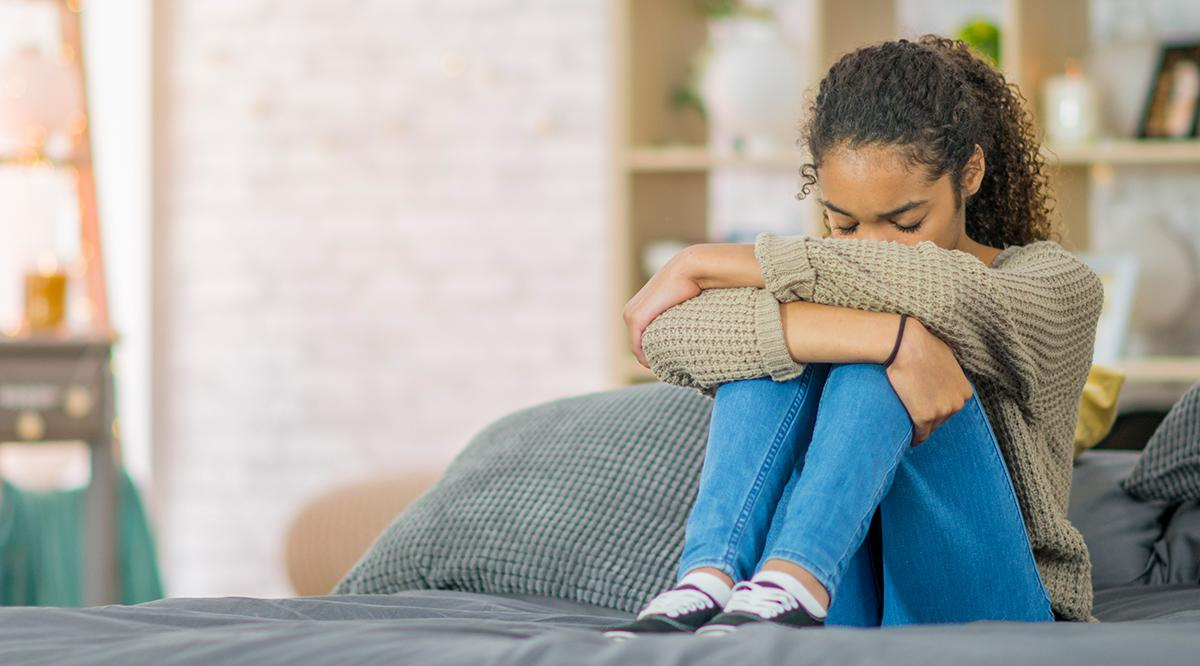NASHVILLE, TN – Grace is a 15-year-old Black girl in Michigan who was sent to juvenile detention after a Juvenile Court judge found her in violation of her probation for not doing online homework.
Grace has ADHD and got special education services but when the COVID-19 pandemic forced her school to close, she struggled with the transition to online learning. Instead of finding an effective educational solution, the judge decided Grace was a threat to society and put her in jail.
According to the National Black Women’s Justice Institute (NBWJI), Grace is a good example of the race and gender discrimination Black girls experience. Adults may view Black girls with depression or mental health issues as “problems” or “troublemakers” and instead of addressing their mental health needs, Black girls are punished and criminalized. What they need is affirmation and treatment that affirms their worth rather than the opposite.
NBWJI surveyed mental health providers to understand how the pandemic was impacting their ability to serve young people. “We have seen that the pandemic has exacerbated the mental health needs of Black girls and gender-expansive youth who are directly impacted by foster care and the juvenile legal system,” said NBWJI Executive Director Sydney McKinney.

McKinney cited two research papers. One found half of mental illness in the U.S. begins in adolescence by the age of 14. The other found that almost 50 percent of adolescents with a mental health disorder do not receive needed treatment or counseling from a mental health professional.
Of the two million juveniles arrested each year, seventy-five percent have experienced some kind of trauma. Black girls are three times more likely to be incarcerated than their White counterparts. In addition, early entry into the Juvenile Justice system can worsen mental health issues, especially depression, because the experience is often one of blame and shame—and feels like one more victimization. Four out of five incarcerated Black girls suffer from a mental disorder.
Among Black youth, experiences of racial discrimination are associated with signs of depression. And depression is a risk factor of suicide.
Between 1991 and 2017, suicide attempts by Black youth increased, while suicide attempts among youth across other race and ethnicities decreased. Suicide death rates for Black teenage girls increased by 182% from 2001 to 2017. Those are pre-COVID numbers.
The CDC surveyed 7,000 adolescents in 2021. They found more than a third (37%) of high school students reported they experienced poor mental health during the COVID-19 pandemic, and 44% reported they persistently felt sad or hopeless during the past year. The new analyses also describe some of the big challenges youth encountered during the pandemic:
- More than half (55%) reported they experienced emotional abuse by a parent or other adult in the home, including swearing at, insulting, or putting down the student.
- 11% experienced physical abuse by a parent or other adult in the home, including hitting, beating, kicking, or physically hurting the student.
- More than a quarter (29%) reported a parent or other adult in their home lost a job.
The pandemic is negatively impacting the mental health of youth, especially Black youth, but the everyday discrimination by law enforcement is a permanent condition of their lives.
For example, police body-camera footage showed a 9-year-old Black girl repeatedly crying and calling for her father last year after police in Rochester, New York responded to a family disturbance call. At one point during the interaction, an officer said, “You’re acting like a child.” She responded, “I am a child.” She was handcuffed, and when she refused to sit inside a police car, an officer pepper-sprayed her. The police officer was suspended.
According to NBWJI, this incident shows how racial bias and gender bias make interactions with police devastating and traumatizing for Black girls. Police continue to see Black girls as less innocent and more adult-like and that only causes more trauma for Black girls; nor does it heal or increase public safety.
The Children’s Partnership released a report recently around policing and its harmful impacts on child well-being. “Policing disproportionately impacts Black, indigenous, and young people of color,” said Angela Vasquez. She is the policy director for mental health at the Children’s Partnership.

Vasquez said that discrimination is directly impacting our youth’s well-being and there’s a level of vicarious trauma happening in Black communities that really came to a head in the summer of 2020 after the murder of George Floyd.
“There is all this trauma, and poverty, and discrimination happening —violence– but while we need to focus on reducing and mitigating those negative experiences, we also need to focus on positive experiences and promoting positive mental health in in our young people,” Vasquez said.
Towards that end, the Children’s Partnership and NBWJI established a Youth Policy Council with 15 community-based organizations. They held listening sessions with adolescents to learn how adults could best support young people with positive experiences.
Some solutions developed with input from young people have to do with school-based services.
“Young people are really interested in having care brought to where they are. Students are more likely to receive an evidence-based service in a school as compared to other community-based settings,” Vasquez said.
Civic engagement can be a mental health intervention. Vasquez said that after young people participated in the protests at Standing Rock, those communities experienced a marked reduction in youth suicide.
“It’s important to recognize that building opportunities for young people to speak truth to power, to connect with other folks in their communities who look like them, who practice the same culture as they do, and connecting that to a larger purpose and their identity, are essential mental health interventions for young people,” she said.
CDC resources on mental health: youth mental health, factsheet

